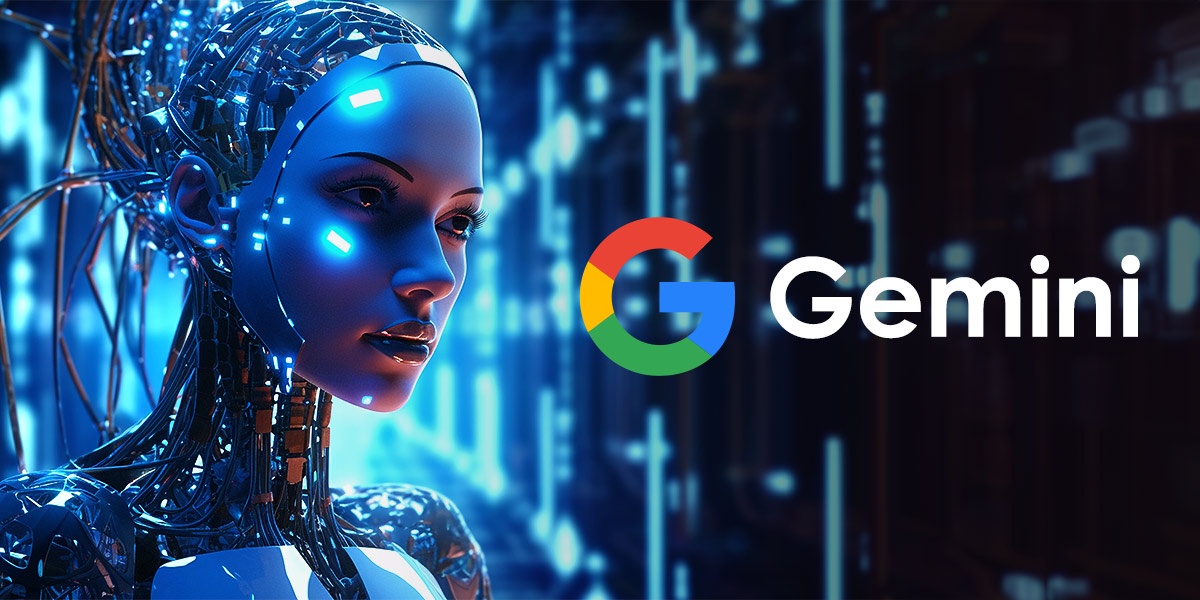In a realm where artificial intelligence is pushing the boundaries of technology, Google DeepMind's Gemini AI emerges as a groundbreaking innovation.
This revolutionary generative AI model by Google is set to transform the way AI comprehends and engages with the world. With its promising capabilities, Gemini AI, a large language model, is poised to elevate our interaction and understanding within the digital environment.
In this blog, we will explore the essence of Gemini, the masterminds behind its development, and delve into its operational mechanisms.
What is Gemini?
Gemini, Google's latest multimodal solution, possesses the ability to process a diverse range of information types simultaneously. It adeptly comprehends and analyzes various data formats, including text, photos, audio, and video.
This generative AI model incorporates advanced training techniques to surpass the limitations of traditional AI systems. Its multimodal capabilities enable it to understand real-world operations, marking a significant stride towards constructing more intelligent, adaptable, and intuitive AI systems.
Gemini opens up new possibilities for AI applications, transforming it into a tool for acquiring comprehensive knowledge from diverse sources and contexts.
Who Developed Gemini?
Gemini is a creation of Google and Alphabet, Google's parent company. Regarded as the most advanced AI model to date, Google DeepMind played a significant role in its development.
According to Dennis Hassabis, CEO and co-founder of Google DeepMind, Gemini is the result of extensive collaborative efforts across various Google teams, including colleagues at Google Research. Its multimodal design allows it to seamlessly understand, operate across, and combine different types of information.
Key points about Google's Gemini
- The initial announcement for Google Gemini followed the launch of Bard, Duet AI, and Google's PaLM 2 LLM.
- The introduction of this AI generative model occurred at the Google I/O developer conference in May 2023.
- Gemini is currently integrated with Google Bard and the Google Pixel 8, with plans for further integration into other Google services.
- Presently, Gemini's datasets are extensively trained on Google-made tensor processing units (TPUs), with future plans to include graphics processing units (GPUs).
How Google's Gemini AI Operates?
Fundamentally, Gemini AI employs sophisticated neural networks, a type of machine learning, to handle and analyze diverse data. Trained on massive datasets of Tensor Processing Units (TPUs), it builds a model with strong generalist capabilities across modalities, including image, audio, video, and text data.
These neural networks take textual input and a variety of audio and visual inputs, producing text and image outputs. This versatility makes Gemini proficient in understanding and reasoning in multi-modal tasks across different domains.
The technology behind Gemini is not just about integrating different data types; it's also about understanding the relationships and interactions between these modalities, setting Gemini apart and fueling its potential to revolutionize various industries.
Google Gemini AI Features
- Multimodal dialogue.
- Multilingual capabilities.
- Game creation.
- Visual puzzles.
- Translating visuals.
- Making connections.
- Logical and spatial reasoning.
Google Gemini AI Limitations
- Primarily supports English.
- Limited use of Gemini Pro with Bard.
- Not available in the EU.
- Text-based Gemini Pro is available with Bard.
- These are the current limitations of Gemini AI.
Different Version of Gemini
Google positions Gemini as a flexible model, capable of running on everything from Google's center to users' mobile devices. To achieve this scalability, Gemini comes in three sizes: Gemini Nano, Gemini AI Pro, and Gemini Ultra.
Gemini Nano – The On-device Powerhouse
Developed for on-device tasks, especially on the Pixel 8 Pro, Gemini Nano comes in two sizes: Nano-1 (1.8 billion parameters) and Nano-2 (3.25 billion parameters). It enhances mobile-enabled tasks like text summarization or suggesting replies in messaging apps.
Gemini Pro – The Versatile Powerhouse Fueling Chatbots
Powering Google's Bard chatbot, Gemini Pro competes with OpenAI GPT-3.5 in various benchmarks, excelling in tasks like brainstorming, writing, and content summarization.
Gemini Ultra – The Super-powered Model
Designed for the most complex tasks, Gemini Ultra, although currently unavailable for widespread use, is the most capable model. It surpasses existing large language models on numerous benchmarks and is finely trained on various codebases.
Conclusion
Google's Gemini AI emerges as a pioneering force in the realm of artificial intelligence, boasting transformative capabilities across diverse modalities. Developed collaboratively by Google and Alphabet, with significant contributions from Google DeepMind, Gemini's multimodal design and advanced training techniques position it as a model with profound potential. From its integration with Google Bard and the Google Pixel 8 to its scalable sizes catering to various platforms, Gemini signifies a significant stride toward more intelligent, adaptable, and intuitive AI systems. While it exhibits promising features, it's essential to acknowledge its limitations, including language support constraints and availability restrictions, as it navigates the path to widespread application and impact.


No comments yet